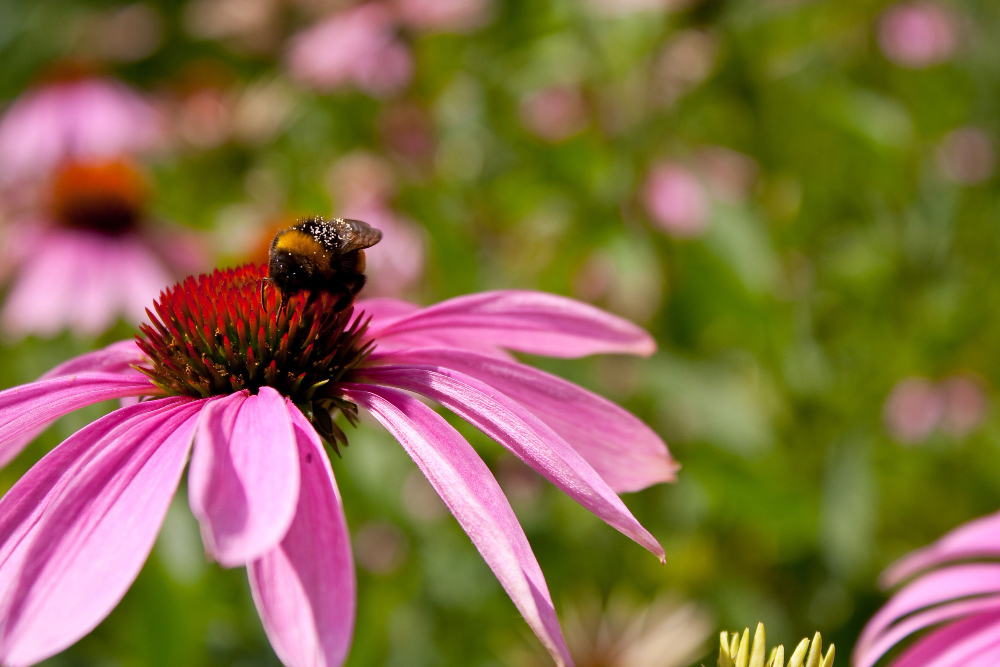Every spring, the landscapes of Texas transform into a breathtaking sea of blue as the beloved bluebonnets bloom. These vibrant wildflowers not only captivate the hearts of locals and visitors alike but also play a vital role in the ecosystems they inhabit. In this article, we will explore the significance of bluebonnets and other wildflowers in promoting biodiversity and maintaining the delicate balance of nature.
Bluebonnets: Nature’s Paintbrush
Bluebonnets, the state flower of Texas, are more than just a picturesque sight. With their vibrant blue petals and distinct shape, they add a touch of natural beauty to the landscape. These wildflowers belong to the legume family, which means they have a unique ability to fix nitrogen in the soil. This process enriches the surrounding environment and provides essential nutrients for other plant species, contributing to the overall health and diversity of the ecosystem.
Haven for Pollinators
Wildflowers, including bluebonnets, serve as crucial habitats for pollinators such as bees, butterflies, and hummingbirds. As these insects and birds visit the flowers in search of nectar, they inadvertently transfer pollen from one flower to another, enabling the process of fertilization and seed production. In turn, the wildflowers rely on these pollinators for their reproduction. By providing food sources and shelter, wildflowers support diverse populations of pollinators, ensuring the continuation of their essential role in plant pollination and ecosystem stability.
Nurturing Native Fauna
The presence of wildflowers in ecosystems goes beyond their beauty and pollinator support. These vibrant blooms also provide a source of nourishment for native fauna. Many animals, including birds, small mammals, and insects, rely on the seeds, fruits, and nectar provided by wildflowers as a vital part of their diet. By attracting a diverse range of fauna, wildflowers contribute to the ecological web and promote the sustainability of local wildlife populations.
Soil Conservation and Erosion Control
The root systems of wildflowers, such as bluebonnets, play a crucial role in soil conservation and erosion control. Their extensive root networks help stabilize the soil, preventing erosion caused by wind and water. By anchoring the soil, wildflowers protect against nutrient loss, maintain soil structure, and reduce the risk of landslides. In areas prone to erosion, the presence of wildflowers can significantly contribute to the preservation of fertile soil and the overall stability of the ecosystem.
Enhancing Biodiversity
Wildflowers, including bluebonnets, act as biodiversity hotspots within ecosystems. They provide a niche for a wide array of plant species, supporting a diverse plant community. This diversity, in turn, attracts various animals, insects, and microorganisms that rely on specific plant species for food, shelter, or breeding grounds. By fostering biodiversity, wildflowers contribute to the overall resilience and health of the ecosystem, making them an essential component of a thriving natural environment.
Cultural Significance and Conservation
Bluebonnets hold deep cultural significance in Texas, symbolizing the state’s natural beauty and heritage. Their iconic status has led to various conservation efforts to protect and preserve their habitats. Organizations and individuals work diligently to ensure the conservation of wildflower populations and their surrounding ecosystems. Conservation practices include promoting responsible wildflower viewing, preserving natural habitats, and raising awareness about the importance of protecting these delicate and valuable resources.
Nature’s Masterpieces
Bluebonnets and other wildflowers are not just fleeting bursts of color; they are nature’s masterpieces with a vital role in maintaining the health and balance of ecosystems. From their nitrogen-fixing abilities to their support of pollinators and the nourishment they provide for native fauna, wildflowers like bluebonnets contribute to the intricate web of life and enhance biodiversity. Additionally, their root systems aid in soil conservation and erosion control, ensuring the long-term stability of the land.



